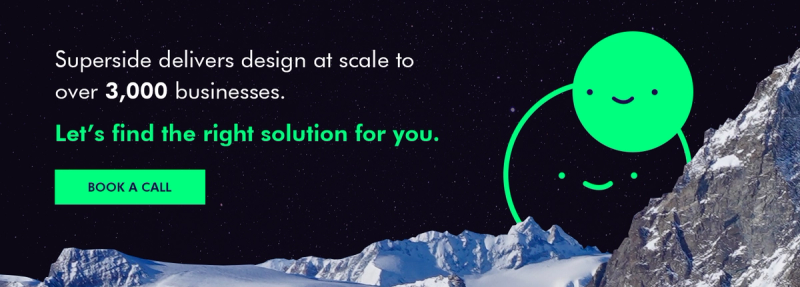UX Design Principles From 5 Top Health and Fitness Apps


With New Year’s right around the corner, millions of people will declare “New Year, New Me!” and resolve to finally get healthy. January is the peak time for sign-ups at gyms and wellness centers; it’s also peak download season for health and wellness apps. Unfortunately, much like a neglected gym membership, many users will uninstall those apps just a few months later. This is why it’s important for companies to build apps around some core UX design principles.
The best way to reduce the rate of uninstalls is to design a mobile health/fitness app that encourages maximum and continual user adoption and engagement. All the bells and whistles and the world don’t mean a thing without a well-executed, attractive and intuitive UX design.
What are the Core UX Design Principles
UX stands for User Experience. It’s a cross-disciplinary concept with many dimensions. The goal of UX design, according to the Oxford Journal “Interacting with Computers,” is to “improve customer satisfaction and loyalty through the utility, ease of use and pleasure provided in the interaction with a product.”
UX design principles are all about enhancing your customers’ experience and making it a valuable use of their time and money. Tomer Sharon, Managing Director, Head of User Research and Metrics at Goldman Sachs describes UX design as “the art and science of generating positive emotions through product interactions.”
A Google study from 2015 revealed that an average user has around 36 apps installed on their mobile device. Of those, only about nine are used on a daily basis and only four percent of the apps will be used over the course of a year.
The basic equation goes something like this: The more usable an app, the higher its engagement. The higher its engagement, the lower the chance of uninstall and the higher the chances users will recommend the app to their friends, family and colleagues.
In other words, adhering to better UX design principles = better retention and more downloads.
From complex photo editing app design, to simple one page websites, in this blog we dive into the below basic UX design principles that any business should consider:
- Bandwidth
- Overall usability
- User goals
- Clear action buttons
- Battery consumption
Designing for Health & Fitness Apps
Fitness and wellness apps have their own unique set of UX design challenges. Clear goal setting, progress and activity tracking, onboarding and motivational calls-to-action are just a few specific factors that are critical to the success of any health and fitness app.
For example, the home screen on a fitness app presents very different design challenges than, say, a messaging app. The user needs to be able to immediately see things like progress towards goals and recent activity as well as having easy access to the plans and features they use most. For some apps this means having a smart product page design to help describe all of the features, which in turn can help convert leads if the app is paid.
Remember: it's important to balance customer feedback AND design innovation when making updates to an app design.
We’ve gathered five of the top health and fitness apps on the market to see what makes them tick, what makes them effective and what makes them successful.
1. Freeletics
Marketed as a bodyweight training program that can go anywhere, Freeletics offers individualized training plans designed to allow you to work out using your own bodyweight via high-intensity interval training. The clean, monochromatic interface and personalized home screen offer new exercise challenges every few days along with your personalized plan.
Why the UX design stands out: Freeletics has a literal sliding scale and ranking system that helps you get really granular in personalizing your experience, goals and intensity level. Leaderboards let you compete with others and an easy to use dashboard that tracks your progress lets you compete with yourself.
2. Asana Rebel
Asana Rebel is about more than fitness. This is a holistic wellness app with a whole spectrum of health, fitness and wellness features ensconced in a pleasing, minimalist black-and-white design. Its bevy of features includes daily plank challenges, quizzes, workout collections for all types and fitness levels, and even curated playlists for focus, sleep and everything in between.
Why the UX design stands out: Even with the crazy number of features, it’s not overwhelming. Scrolling through the app manages to be relaxing and motivating all at once. Asana Rebel uses an Instagram-esque design that feels more like scrolling through social media than slogging through a list of workouts. Each scroll presents a new activity that benefits both your fitness and your overall wellness.
3. Calm
As the name suggests, Calm is not a workout app, but a mindfulness and mental health app that offers a range of exercises and programs designed to help users meditate, improve sleep, reduce stress and improve focus. The motif and aesthetics contribute to the calm vibe. Everything about this app from the naturalistic typeface to the soft gradient colors is designed to evoke tranquility.
Why the UX design stands out: Calm skips the standard login/sign-up screen at initial use in favor of prompting the user to choose their top goals. It’s a smart move as many users are already braced for a lengthy onboarding process with lots of pressure to pay for premium features upon new install of an app. Instead, Calm offers value and showcases the benefits of their program right out of the gate, providing a calmer (ha ha) experience than the alternative.
4. Nike Run Club
Nike’s Run Club offers to help people overcome the motivation gap between wanting to get in shape and actually sticking with a program. The app features GPS tracking, guided running workouts, custom coaching plans, and motivational messaging and reminders from not only the app but also friends and fellow users.
Why the UX design stands out: Run Club uses gamification to motivate and encourage engagement while keeping the experience fun. The app encourages users to log sessions and participate in challenges with other users. The challenges appear as bright and colorful full-screen modals. Each challenge offers prizes to participants and is only available for a limited time so the user has a sense of urgency. In order to prevent burn out after the honeymoon period runs out, Nike Run Club makes a point to celebrate wins both large and small as the user progresses.
5. Classpass
Unlike the other apps on this list, rather than provide exercises of its own, Classpass gives users access to thousands of workout classes, both in-person and via video, through a single access point. The subscription-based app essentially provides the user with a membership to 30,000 fitness studios and gyms around the world. Users get credits that are used to purchase individual classes at deeply discounted rates, rather than having to purchase a whole gym/studio membership.
Why the UX design stands out: Classpass times their feedback-requests to pop up at the first login after a given class so it’s still fresh in their minds and more likely to leave feedback. The feedback modal is mostly multiple-choice and requires very little effort on the part of the user, another feature that makes participation more likely. Classpass then uses this feedback to personalize the user’s experience and improve the app for others.

The Right Stuff
Keeping users engaged is a challenge for any designer. That’s doubly true for health and fitness apps as the challenge is to keep users engaged with the app AND motivated to continue their fitness journey.
By following some key UX design principles, users will continue to use the app, get results, and happily share those results with their social networks. Finding designers who can accomplish the right balance of motivational and engaging with just the right addictive factor is another challenge in and of itself.
At Superside, we understand that in the digital world, a design is only as good as its UX, making it an integral element of any good design. That’s why every designer on our team is trained at our design academy. Our global team of talented designers brings extensive experience creating mobile apps to the table.
Need some design assistance? Let us help you create the perfect mobile app design to bring your ideas to life.
Built to be an extension of in-house teams, we deliver fast, scalable, world-class design and creative solutions to over 450 globally renowned companies such as Amazon, Meta, Salesforce and Google. Connect with us on LinkedIn.
You may also like these

The 20 best web design services in New York for 2025
In 2025, New York’s “Silicon Alley” rivals Silicon Valley with innovative creative agencies that have mastered the process of creating impressive, AI-driven digital experiences.The result is that outdated websites can no longer compete in the city that never sleeps. Choosing the best website design and digital marketing company you can afford is crucial for combining visual appeal with results..Superside’s full suite of design services has been developed to keep up with New York-based enterprise teams’ evolving needs. We’ve completed over 7,000 web design projects, so we know what it takes to nurture websites from concept to launch.If searching for a reputable full-service website design agency in New York feels like looking for a needle in a haystack, sit tight. We’ve created a detailed guide on the benefits of hiring a capable creative partner, highlighting the top 20 web design services in New York right now.Benefits of hiring a quality web design service
5 New Web Design Trends for 2025 (Expert-Vetted)
As businesses prioritize a standout customer experience (CX) from the moment a lead lands on their website through their first purchase, top website performance is a priority for constant success and reduced churn rates.Just last year, the global web design market was valued at $56.8 billion. Top brands know the power of modern web design at each step of the customer journey... And they won't risk it.Did you know that 39% of website visitors lose interest when they step on slow-loading images? Enterprises lose $2.6 billion annually only on this bad practice.The latest web design trends for 2025 not only help your brand avoid bad web design practices, but they’re crucial to delivering amazing brand experiences that translate into positioning and higher returns on investment (ROI).Keeping pace with current web strategies helps companies attract users’ attention and makes their journeys smoother. Whether your company is launching a new website or needs a full redesign, Superside has the expertise to support you with a key website design that speaks for your brand and empowers customers to take the next step with you.
12 Best eCommerce Web Design Agencies for Enterprises in 2025
Exceptional web design is a key ingredient in eCommerce success. With countless online stores vying for customers’ attention, a well-designed website is more than just a visual asset—it’s a strategic tool that can enhance the customer experience (CX), build trust and drive conversions.Businesses that invest in high-performing eCommerce websites engage customers more effectively and streamline the buyer’s journey, ultimately giving them the edge over competitors.For enterprise-level businesses seeking online success, the challenge is even bigger. These companies need websites that integrate seamlessly with existing systems like inventory management platforms, customer relationship tools and secure payment systems.Without the right web design partner and good eCommerce web designers, you risk investing in a design that looks good but fails to deliver. Problems like slow loading times, confusing navigation and insufficient website security measures can put off potential customers and hamper growth.Of course, these are problems you can easily overcome by making Superside your web design partner. From concept to launch, our design experts will become your creative team’s creative team, crafting innovative solutions to help your enterprise website stand out.






